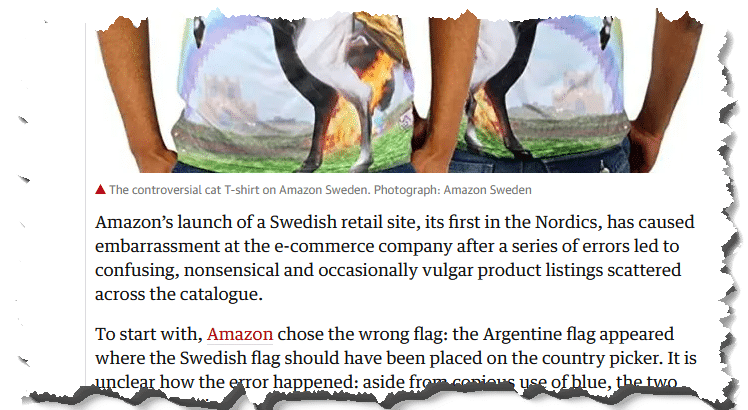Amazon is powering ahead this year, getting a further boost from the pandemic in markets like Germany and Japan. Although first-party sales are an important part of the Amazon model, you might not know that marketplace sales make up more than 60% of Amazon’s business, according to Business Insider. So if you sell on Amazon, you have probably wondered whether Amazon Translate is good enough.
Launched in 2017, Amazon Translate joins a growing array of neural machine translation (NMT) services. But like all Machine Translation options, Amazon Translate can go horribly wrong. When Amazon launched in Sweden in October, “a series of errors led to confusing, nonsensical and occasionally vulgar product listings scattered across the catalogue” according to The Guardian.

It’s not just translation quality at issue here though. Here are four key things to consider when evaluating options for your Amazon listing translations.
Amazon Translate doesn’t do your keyword research for you
Just like you focus on Google for web search, you focus on Amazon’s A9 search engine to make sure you show up in Amazon search results. Multilingual keyword research is essential to make sure you’re targeting the terms people are searching for in each market. We’ve written before about keyword research so I won’t repeat it here, suffice to say that if you take keyword research seriously for your home market, you also need to for your target markets. Once you’ve worked out which keywords convert for you, make sure these show up in product titles and descriptions. And don’t forget the value of long-tail keywords, they can give you a powerful boost.
It’s all about conversion, so don’t neglect A+ and EBC content
Amazon loves sellers making use of A+ and Enhanced Brand Content (EBC) content because they drive conversion. This content is likely embedded in images, and Amazon Translate won’t touch it. A+ and EBC content doesn’t directly affect search performance, but remember that A9 is weighted towards products that convert. Anything that helps you convert also helps get you higher up the search results. So don’t scrimp, get your A+ and EBC content properly translated.

Oh, and there’s B+ as well
Everything we said above also applies to text contained within your regular product images. If they help you convert in your home market, they’ll also help in your target market.
Amazon Translate doesn’t touch video either
Video is really effective in driving conversions, and there are a few ways you can translate this content. Voiceover costs a lot more than adding translated subtitles, so you need to set costs against sales projections.
Sounds like this is going to bust my budget?
Fair question, and it’s easy for a translation company to lecture you on why you should spend more on translation! So in the real world you need to focus the budget you have available where you think it will have the most impact. Once you can prove translation is driving sales, your next budget discussion is going to be much easier.
You should focus your budget on:
- Larger markets (Germany before Italy, for instance)
- Markets with lower confidence in English (Japan before Sweden, for instance)
- Best sellers
So you can see that Amazon Translate may be better than nothing, but it’s really limited. It’s not just the risk of nonsense translations, but also the content that won’t get translated, and the lack of strategic focus on keywords that convert.
Wondering what your next step is? Talk to us and we can help you work out where your budget will have most impact.




